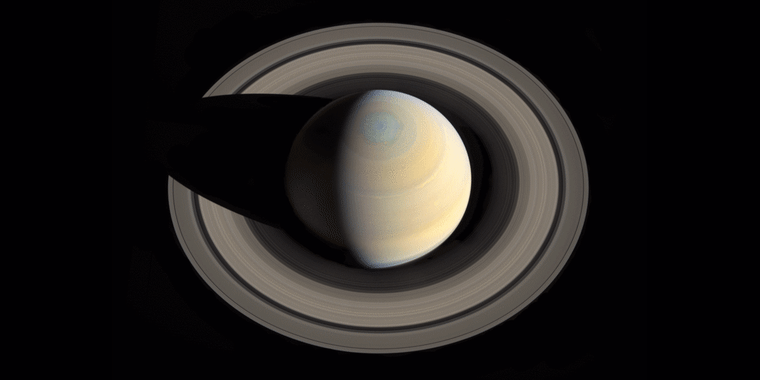Saturn’s rings are one of the solar system’s most recognizable features, but a new study shows that the planet is losing its famous accessories — and faster than anyone realized.
Astronomers have known since the 1980s that the sixth planet from the sun is shedding its signature rings, which are made up of swirling rocks and water ice. But the study — published Dec. 17 in the journal Icarus — shows that the process is occurring so fast that the rings could disappear in 100 million to 300 million years.
While that’s an almost inconceivably long time for humans, it’s almost a blink of an eye on a cosmic timescale. The solar system has been around for billions of years and is expected to last for many billions more.
“The big conclusion is that ring systems are temporary features,” said James O’Donoghue, a postdoctoral fellow at NASA’s Goddard Space Flight Center in Greenbelt, Maryland, and lead author of the study. “They’re just not built to last.”
The research reveals the complex relationship between Saturn and its rings.
“We used to think the ring system was fixed and would always look the same,” said Henry Throop, a senior scientist at the Planetary Science Institute in Washington, D.C., who was not involved with the study. “Now we see that the ring system is a really dynamic, exciting place that is changing on a year-to-year basis.”
O’Donoghue and his colleagues observed Saturn’s ring system from the Keck Observatory on Hawaii’s Big Island and studied data from NASA’s now-defunct Cassini spacecraft, which spent 13 years orbiting Saturn before deliberately plunging into the planet last year.
The researchers found that the rings — which are thousands of miles across and 98 percent ice — are falling bit by bit onto Saturn, a phenomenon the scientists dubbed “ring rain.”
“The rings are literally raining water onto the planet,” O’Donoghue said. “The rate is about 2 tons per second — enough to fill an Olympic-size swimming pool every 30 minutes or so.”
The ring rain is caused by sunlight. Ultraviolet light from the sun gives an electrical charge to tiny bits of ice in the rings, causing them to move toward the planet along the lines of its magnetic field.
“The rings are basically being eaten away from the inside,” O’Donoghue said, adding that the new findings suggest that the rings are younger than Saturn itself, which like the rest of the solar system is about 4.5 billion years old. “If they’re decaying fast now, they can’t have been around that long. The rings probably formed at the same time that the dinosaurs were about to be wiped out” on Earth, tens of millions of years ago, he said.
O’Donoghue and his colleagues plan to conduct follow-up observations to see if the erosion of the rings is affected by seasonal changes. As Saturn moves closer to the sun in its elliptical orbit, he said, it’s possible that ring rain may ramp up.
Want more stories about astronomy?
- Scientists discover 'Farout,' the most distant solar system object ever seen
- Weird hexagon on Saturn is way bigger than scientists thought
- Now we know what will happen when the sun dies

